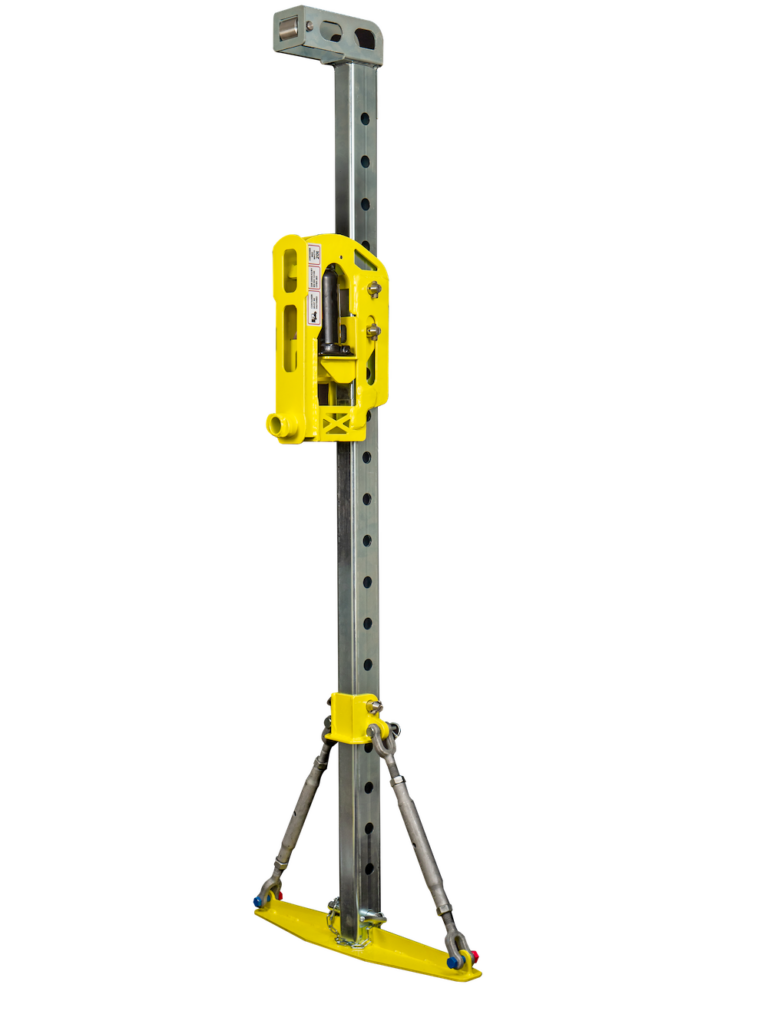ConFoot container legs represent Finnish innovation and product development expertise. The design of the legs combines highly refined practicality and cost-effectiveness, resulting from years of development work. The first model went into production in 2013, and since then, ConFoot has introduced new models and improved the features of existing ones.
The design and development of ConFoot legs require various factors to be considered. Product development often arises from customer demand or the need to implement a tailored solution based on specific customer requirements. The starting points for developing container legs are always ConFoot’s goals of lightweight construction, ease of use, and cost efficiency.
Lead Engineer Mikael Ekholm has designed ConFoot products since 2021. The standard models have remained essentially unchanged, but recent development has focused on adjustable-height legs as well as customer-specific custom models:
“Over the years, I have designed a wide range of projects, focusing primarily on lifting container legs and developing customized models,” Ekholm summarizes.
Evaluating Design Goals at Different Stages
“Development work starts with a preliminary plan, after which we assess whether the objectives can be achieved—for example, the leg must not be too heavy,” Ekholm explains the stages of development.
Engineers conclude how to proceed with the design based on the preliminary plan. If the decision is made to continue development, the plan is finalized. After that, a prototype is created and subjected to the required tests. If the tests confirm that the result meets the set goals, the new product moves to production and is brought to market.
In addition to standard models, ConFoot manufactures customized container legs that consider customer-specific requirements. These offer numerous development opportunities for the legs’ features: “Often, customer-specific needs are related to special conditions, such as extreme winds, varying temperatures, or vibrating locations,” Ekholm lists.
ConFoot’s product development and the unique design of the container legs allow them to be used in different conditions and for various applications. Today, the legs can improve logistics efficiency and enable mobile, container-based solutions, for example, in crisis areas.
Strength and Lightness as Design Requirements
ConFoot’s goal is that handling each leg should require only one person, which limits how heavy the leg can be. The requirement for lightness brings its own challenges to the development work, as Ekholm points out:
“Strength is often the most challenging aspect – ensuring sufficient load-bearing capacity in a lightweight tool. The most important solutions are material choices and optimizing every detail from a lightness perspective.”
This development work has been successful, as the ConFoot legs weigh only 24 kg. Only the CFU leg weighs 46 kg, but even in that case, each individual part weighs less than 25 kg.
In addition to sufficient strength, uniform quality is one of the design’s most critical goals. In series production, every leg must meet high-quality standards and fulfill the specified criteria.
The choice of materials plays a key role in achieving sufficient durability and lightness while maintaining cost efficiency. ConFoot’s principle is that the legs must remain reasonably priced so that they concretely generate a return on investment for customers, for example, through reduced working hours and improved logistics efficiency.
The New CFU30 Meets the Customer’s Request for Higher Load Capacity

“The CFU30 is one of my most significant successes in ConFoot’s development work. Implementing the leg was challenging, as we needed to keep its weight light enough while ensuring sufficient strength,” says Ekholm.
The CFU container foot is the only height-adjustable container foot in the world. Its mechanism allows the leg to be adjusted from the ground to 1.5 meters. The previous model’s load capacity was 20 tons, but the new product offers a capacity of 30 tons, which significantly increases load capacity and leg availability.
The latest model’s development began in early 2023 with the creation of the first plan and prototype. However, this version did not proceed to production due to its excessive weight.
The new version’s design began in the summer of 2024: “The mechanism solutions were already in place, so the development was mostly about strength calculations. Of course, we also added some material and increased the tube sizes. We also had to ensure enough space under the leg to accommodate a sufficiently large jack,” Ekholm describes the project’s progress.
Finally, a leg was produced that meets ConFoot’s principles of lightness and ease of use and customers’ requests for increased load capacity. The new CFU30 will be available for sale from spring 2025 onward. It will offer a wider range of accessibility and drive the development of more efficient transport chains.